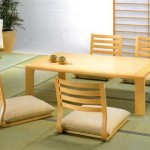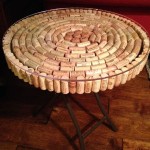Orchid Centerpieces For Dining Table: A Guide to Elegant Decor
The dining table serves as a focal point within a home, a space where meals are shared and connections are fostered. Decorating this space thoughtfully can enhance the dining experience and reflect the homeowner's aesthetic sensibilities. Among the myriad options available for table decoration, orchid centerpieces stand out as a sophisticated and enduring choice. Orchids possess an inherent elegance and a long lifespan, making them a worthwhile investment for creating a visually appealing and enduring dining table display. This article explores the various aspects of incorporating orchid centerpieces into dining table decor.
When selecting an orchid for a dining table centerpiece, consider the size and shape of the table. A small, round table benefits from a single, statement-making orchid in a decorative pot. Conversely, a long, rectangular table can accommodate a series of smaller orchid arrangements or a more elaborate, multi-stemmed display. The orchid's color should complement the existing dining room decor. White orchids offer a classic and versatile choice that blends seamlessly with any color scheme, while brightly colored orchids can introduce a vibrant pop of color. The type of orchid is also a consideration. Phalaenopsis orchids are popular for their ease of care and long-lasting blooms, while Dendrobium and Cattleya orchids offer more exotic shapes and colors.
Selecting the Right Orchid Species for a Dining Table
Choosing an orchid species for a dining table centerpiece hinges on various factors, including personal preference, the level of care one is willing to provide, and the aesthetic desired. Phalaenopsis orchids, often referred to as moth orchids, are a highly recommended option for beginners due to their relatively low maintenance requirements and extended blooming period, which can last for several months. They thrive in indirect light and require infrequent watering, making them suitable for a dining room environment. Their elegant, cascading blooms come in a wide range of colors, from pure white and soft pink to vibrant purple and yellow, making it easy to find one that complements the existing dining room décor.
Dendrobium orchids offer a more diverse range of shapes and sizes, with some species featuring tall, upright stems adorned with numerous small blooms. These orchids require slightly more sunlight than Phalaenopsis orchids and prefer a well-draining potting mix. They are a good choice for those seeking a more architectural and visually striking centerpiece. Cymbidium orchids, known for their large, showy flowers and tolerance for cooler temperatures, can also be used as dining table centerpieces, particularly during the colder months. However, they require more sunlight than other orchid species and may need to be moved to a brighter location during the day. Cattleya orchids, often referred to as the "corsage orchid," are prized for their large, fragrant blooms and vibrant colors. These orchids require bright, indirect light and well-draining potting mix. Their dramatic flowers make them a statement piece for any dining table.
Beyond these common species, numerous other orchid varieties can be incorporated into dining table centerpieces. Oncidium orchids, known for their sprays of small, intricately patterned flowers, add a touch of whimsy and elegance. Paphiopedilum orchids, often referred to as lady slipper orchids, feature uniquely shaped pouches that resemble slippers, adding a touch of intrigue to the dining table. Regardless of the species chosen, it is important to research its specific care requirements to ensure its longevity and continued beauty.
Designing and Arranging the Orchid Centerpiece
The design and arrangement of an orchid centerpiece are crucial for creating a visually appealing and harmonious display. The choice of container plays a significant role in the overall aesthetic. Ceramic pots, glass vases, and even woven baskets can all be used to house orchids, depending on the desired style. A minimalist approach often works best, allowing the orchid's natural beauty to take center stage. A simple, elegant pot in a neutral color can complement the orchid without overpowering it. For a more formal dining room, a crystal vase or a silver planter might be appropriate. For a more rustic or informal setting, a terracotta pot or a wooden box can add a touch of warmth and charm.
When arranging the orchid, consider its height and spread. A tall orchid in a narrow vase can create a sense of drama and elegance, while a shorter, wider orchid in a shallow bowl can create a more intimate and inviting atmosphere. The orchid can be displayed on its own or combined with other elements, such as moss, stones, or decorative branches. Moss can be used to cover the potting mix and create a natural, woodland effect. Small stones can be scattered around the base of the orchid to add texture and visual interest. Decorative branches, such as curly willow or bamboo skewers, can be used to provide additional height and structure to the arrangement. The key is to create a balanced and harmonious composition that complements the orchid without overshadowing it.
The arrangement should also consider the practicality of dining. The centerpiece should not be so large that it obstructs the view across the table or interferes with the placement of serving dishes and other dining essentials. It is generally recommended to keep the centerpiece relatively low or to use a raised platform to elevate it without blocking the view. The centerpiece should also be stable and secure to prevent accidental spills or damage. Consider using floral foam or other stabilizing materials to keep the orchid securely in place. Finally, consider the overall lighting of the dining room. The orchid should be placed in a location where it receives adequate light but is not exposed to direct sunlight, which can scorch its leaves. Artificial lighting can also be used to highlight the orchid and create a more dramatic effect.
Maintaining the Beauty and Longevity of Orchid Centerpieces
Proper care and maintenance are essential for ensuring the beauty and longevity of orchid centerpieces. Orchids require specific conditions to thrive, and understanding these requirements is crucial for keeping them healthy and vibrant. Watering is a critical aspect of orchid care. Overwatering is one of the most common mistakes made by orchid owners, leading to root rot and other problems. Orchids should be watered only when the potting mix is dry to the touch. The frequency of watering will depend on the type of orchid and the environment in which it is growing. Generally, orchids should be watered every one to two weeks. When watering, be sure to soak the potting mix thoroughly and allow excess water to drain away. Avoid allowing the orchid to sit in standing water, as this can lead to root rot.
Orchids also require adequate humidity. In a dry environment, such as a heated home during the winter, orchids may benefit from increased humidity. This can be achieved by placing the orchid on a tray filled with pebbles and water, or by using a humidifier nearby. Misting the orchid's leaves can also help to increase humidity, but be sure to avoid misting the flowers, as this can cause them to spot. Fertilizing orchids is also important for promoting healthy growth and flowering. Orchids should be fertilized regularly during the growing season, using a balanced orchid fertilizer diluted to half strength. Avoid over-fertilizing, as this can damage the orchid's roots. During the dormant season, orchids require less fertilizer.
Regularly inspect the orchid for signs of pests or diseases. Common orchid pests include mealybugs, scale, and spider mites. These pests can be controlled with insecticidal soap or horticultural oil. Orchid diseases include fungal infections and bacterial rots. These diseases can be prevented by providing good air circulation and avoiding overwatering. If a pest or disease is detected, it is important to treat it promptly to prevent it from spreading. Finally, be sure to prune the orchid regularly, removing any dead or yellowing leaves or spent flowers. Pruning helps to promote healthy growth and flowering and keeps the orchid looking its best. With proper care and maintenance, an orchid centerpiece can bring beauty and elegance to a dining table for many months, or even years.

Easy Orchid Centerpiece Easter Tablescape

Dining Areas Switch Up The House Room Table Centerpieces Centerpiece Orchid Interior Design

Buy Dining Table Orchid Arrangement White Silk Artificial In A Concrete Boat Shaped Vase With Leaves

How To Make A Simple And Beautiful Orchid Arrangement Decor Gold Designs

Orchid Centerpieces Are Long Lasting And Come Together In A Flash

Nice Table Center Perfect For A Large Entry Hall Space Orchid Arrangements Beautiful Orchids Centerpieces

Orchid And Pinecone Easy Table Stonegable

Simple Orchid Centerpiece Wedding Ideas Orchidea Piante

Decorating With Orchids Easy Orchid Display Ideas Perfecting Places

Easy Orchid Centerpiece Easter Tablescape








